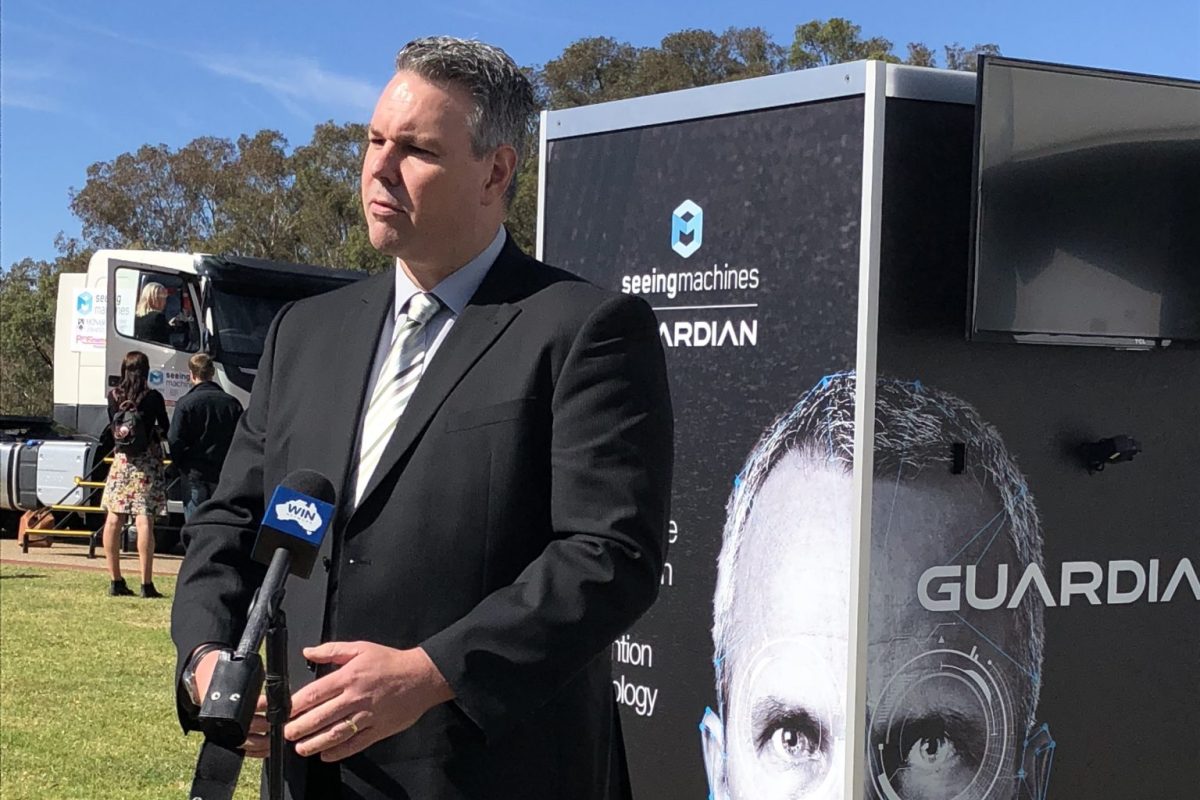Advanced Safe Truck Concept aims to reduce truck crashes
Lifesaving technology hits the road as innovative study, Advanced Safe Truck Concept, led by Seeing Machines, seeks to reduce truck crashes.
Seeing Machines led the Advanced Safe Truck Concept (ATSC) project, in collaboration with Monash University Accident Research Centre (MUARC), Ron Finemore Transport (RFT) and Volvo Trucks Australia. The key objectives were to understand the risks faced by trucking operations and their drivers, and enhance existing technology solutions.
Launch of the Advanced Safe Truck Concept
The A$6.5 million Advanced Safe Truck Concept, an Australian Government Cooperative Research Centre Project, aimed to reduce fatal truck crashes by developing new vehicle technologies, achieved by studying driver behaviour and better understanding the impact of driver fatigue and distraction in particular.
The Hon Paul Fletcher MP, Minister for Urban Infrastructure and Cities, launched the landmark study in 2018 with the goal of reducing heavy vehicle crashes in Australia and improving truck driver wellbeing, featuring world-leading fatigue prevention and driver monitoring technology.
Minister Fletcher said “On behalf of the Australian Government I am pleased to be launching this important study which aims to help make our roads safer for all users. I congratulate Seeing Machines and all the partners here today for their important work and I look forward to following the study’s progress.”
The study was the first of its kind in the world to be done linking in-cab driver monitoring technology with the external traffic and roadway in real time. The Seeing Machines technology is fitted in a number of vehicles from the Ron Finemore Transport Services fleet.
The two-phase program builds on the Seeing Machines’ Guardian technology platform that actively monitors for and alerts drivers to fatigue and distraction.
Seeing Machines Executive Chairman, Ken Kroeger, said the innovative technology positioned the project as a world-leading road safety initiative.
“We are so proud to be at the forefront of road safety here in Australia and excited to see our driver monitoring technology delivering safety solutions across all transport sectors globally,” Mr Kroeger said.
“We have the opportunity to drive clever product design in revolutionary ways to enhance road safety” said Seeing Machines’ Chief Scientific Officer and project leader, Dr Mike Lenné.
“Furthermore, it’s very rewarding to see the Australian Government recognise both the technological innovation and the road safety impact of this project. It’s exciting to work with great partners on a project that will positively impact the heavy vehicle industry in Australia and around the world and consequently, the safety of all road users.”
Phase one of the project saw testing of truck drivers in MUARC’s Advanced Driving Simulator, the first time a truck simulator has been used for research in Australia. Drivers were tested in a rested and a fatigued state to develop a better understanding of fatigue on truck safety.
MUARC Director, Professor Judith Charlton, said the research could make a profound impact in reducing fatalities in the freight industry.
“We pride ourselves on translating evidence-based research into real-world solutions and by working alongside our industry partners and with the support of the Federal Government, this project has the capacity to prevent injuries and save lives,” Prof. Charlton said.
Impact on Australia’s Trucking Industry
According to the Bureau of Infrastructure, Transport and Regional Economics (BITRE), 2,462 Australians were killed as a result of involvement in heavy vehicle crashes between 2005 and 2014. These fatalities represented 17.5% of deaths on Australian roads.
The trucking industry is a major part of the Australian economy. A 2016 report by National Transport Insurance stated the industry included over 500,000 registered trucks, 41,097 businesses and 259,508 employees.
Ron Finemore Transport, which employs more than 450 people and has over 200 prime movers, fitted its fleet of trucks with the same driver monitoring technology as part of the project’s Naturalistic Road Safety Study.
General Manager of Ron Finemore Transport Services, Darren Wood said “By participating in this study we are helping to make Australian roads safer for not only our drivers but all users of our roads. At RFT we are committed to world’s best practice in driver and fleet safety. As end users, we have the opportunity to influence the technology, so it best addresses the needs of the freight industry”.
Associate Professor Michael Fitzharris, Head of MUARC’s Regulation and In-depth Crash Investigation Unit said “The type of technology deployed here has the potential to be applied across all vehicles, potentially saving thousands of lives and preventing countless serious injuries. By working in partnership with key stakeholders, the program represents a profound opportunity to demonstrate the value of combining in-vehicle driver monitoring with what is happening on the road, in real time. We would hope that this type of technology is fitted to all vehicles as standard equipment in the future.”
Research Outcomes
The program concluded in 2020 with key outcomes including:
- Supporting the efficacy of real-time monitoring of driver drowsiness for the trucking industry
- New insights to characterise drowsiness and distraction
- Enhanced algorithms to measure driver drowsiness and distraction in real-time
- World-first datasets showing the full range of target driver states
- Leveraging high-quality research and feedback from customers in Seeing Machines’ product development.
You can read a full summary of the program and outcomes in the Advanced Safe Truck Concept Final Report.

